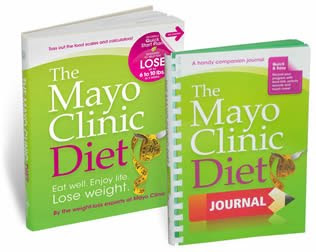
The first step in orthorexia treatment is to determine the root cause. Many times, the root cause of orthorexia can be found in anxiety or self-doubt. If you're a loved one with orthorexia you might consider therapy for them. Orthorexia is a condition that makes people highly perfectionists. It means that you must work on your perfectionism to avoid making them feel bad about their eating habits.
Orthorexia is an eating disorder that affects people who are severely overweight. It's important to know what causes this condition. People with the disorder are able to classify different food types into "good" or "bad" categories. These "good foods" are often clean and pure foods that conform to strict nutritional quality standards. While "bad foods" are generally considered unhealthy, they can be found in clean and pure foods. While eating "good" foods may increase a person's sense of accomplishment, the condition can cause them to feel incredibly sad and alone.

Orthorexia can be difficult to diagnose because many patients don't recognize the harmful effects of their eating habits. This is especially true if they aren't aware of how their eating habits can impact their overall health. It's important for those with orthorexia to seek treatment from a multidisciplinary team that includes a physician, psychologist, and registered dietitian. These therapies are effective but you should talk to your doctor to confirm the diagnosis.
Although the exact cause of orthorexia remains elusive, it can be linked to emotional dysregulation, low self-esteem and social isolation. It can impact an individual's social life as well as their health, leading to heart disease and cardiovascular disease. Orthorexia sufferers are more likely than others to isolate themselves because they are rigid about their diet.
While the root causes of orthorexia may not be fully understood, it is common. Most orthorexia sufferers have been diagnosed with malnutrition and severe weight loss. The condition can also be seen in other people. If you have a loved one with orthorexia, it is essential to seek treatment. The doctor won't be able tell you what is wrong with someone with orthorexia. However, they can help them overcome the disorder.

Orthorexia patients may have trouble with food and believe that a strict diet is essential for their self-worth. People with orthorexia believe that their happiness and health depend on how they eat. This can lead to emotional dependence and can cause severe health problems. There are options available to help with this problem. The treatment of an eating disorder can also include medication. Therefore, it is important that you seek the help of a qualified professional.
FAQ
How to measure body fat?
A Body Fat Analyzer can be used to measure body fat. These devices are used for measuring the percentage of body fat in people who want to lose weight.
What causes weight loss as we age?
How do I know if my bodyweight changes?
A person who has less body fat than their muscle mass will experience weight loss. This means that the amount of calories consumed must exceed the amount of energy used daily. Low activity levels are the most common cause for weight loss. Others include pregnancy, hormonal imbalances or certain medications. Weight gain is when there are more calories than muscle mass. It occurs when people eat more calories than what they use in a given day. Overeating, increased physical activity and hormonal changes are all common reasons.
Our bodies lose weight because we eat fewer calories than we burn. Exercise regularly increases your metabolism rate, which allows you to burn more calories every day. This does not necessarily mean that we will get thinner. What is more important is whether or not our body is losing or gaining weight. If we're burning more calories than we're consuming then we're going to lose weight. But if you consume more calories than you burn, you're actually storing them for fat.
As we get older, our movement speed slows down and so we move less. We also tend to eat less food than we did when we were younger. Also, we are more likely to gain weight. On the flipside, we are more muscular than we really need and appear bigger.
Without regularly weighing yourself, it is impossible to gauge how much weight you have lost. There are many options for measuring your weight. You can measure your waist, hips and thighs as well as your arms. Some prefer to use the bathroom scales, others prefer to use tape measures.
To track your progress, weigh yourself once a week. Measure your waistline once per month. You can also take pictures of yourself every few months to see how far you've come.
Online, you can find out your height and weight. You'd likely weigh 180 pounds if you were 5'10 tall and 180 pounds if you were 180lbs.
What does it take to make an antibiotic work?
Antibiotics can be used to kill bacteria. To treat bacterial infections, antibiotics are used. There are many options for antibiotics. Some are taken orally, some are injected, and others are applied topically.
People who have been exposed may be prescribed antibiotics. An oral antibiotic might be prescribed to someone who has been exposed to chicken pox. This will prevent the spread of shingles. Penicillin might also be administered to someone with strep throat. This will help prevent the possibility of developing pneumonia.
If antibiotics are to be administered to children, they must be prescribed by a doctor. Children are more susceptible to side effects from antibiotics than adults.
Diarrhea is one of the most common side effects of antibiotics. Other side effects possible include dizziness, nausea, vomiting, stomach cramps, dizziness and allergic reactions. These side effects usually disappear once treatment has ended.
Is cold a sign of a weak immune response?
Cold makes you weaker because you have less white blood cells to fight infection. Being cold can make you feel more comfortable because your brain releases endorphins which help reduce pain.
What are 10 healthy habits?
-
Breakfast is a must every day.
-
Don't skip meals.
-
Maintain a balanced diet.
-
Drink lots of water.
-
Take good care of your body.
-
Get enough sleep.
-
Avoid junk foods.
-
Daily exercise
-
Have fun
-
Make new friends
Statistics
- According to the 2020 Dietary Guidelines for Americans, a balanced diet high in fruits and vegetables, lean protein, low-fat dairy and whole grains is needed for optimal energy. (mayoclinichealthsystem.org)
- According to the Physical Activity Guidelines for Americans, we should strive for at least 150 minutes of moderate intensity activity each week (54Trusted Source Smoking, harmful use of drugs, and alcohol abuse can all seriously negatively affect your health. (healthline.com)
- nutrients.[17]X Research sourceWhole grains to try include: 100% whole wheat pasta and bread, brown rice, whole grain oats, farro, millet, quinoa, and barley. (wikihow.com)
- WHO recommends consuming less than 5% of total energy intake for additional health benefits. (who.int)
External Links
How To
What does the "vitamins” word mean?
Vitamins are organic compounds that can be found in foods. Vitamins are necessary for us to absorb nutrients in the foods we consume. The body cannot make vitamins; therefore, they must be obtained from food.
There are two types if vitamins: water soluble, and fat soluble. Water-soluble vitamins dissolve in water easily. Examples include vitamin C,B1 (thiamine), B2 (riboflavin), B3 (niacin), B6 (pyridoxine), folic acid, biotin, pantothenic acid, and choline. Fat-soluble vitamins can be stored in the liver or in fatty tissue. Vitamin D, E, K and A are some examples.
Vitamins are classified based on their biological activity. There are eight main groups of vitamins.
-
A - Vital for normal growth and maintaining good health.
-
C - essential for nerve function and energy generation.
-
D - necessary for healthy bones and teeth.
-
E - needed for good vision and reproduction.
-
K - Essential for healthy muscles and nerves.
-
P - Essential for strong bones and teeth.
-
Q - aids digestion and absorption of iron.
-
R is required for the production of red blood cells.
The recommended daily allowance for vitamins (RDA) varies based on gender, age, and physical conditions. The U.S. Food and Drug Administration, (FDA), sets the RDA value.
For adults aged 19 and older, the RDA for vitamin B is 400 micrograms daily. Pregnant mothers need 600 micrograms per days because it is vital for the development and growth of their baby. Children ages 1-8 require 900 micrograms per day. Infants under one year of age require 700 micrograms per day, but this amount decreases to 500 micrograms per day between 9 months and 12 months of age.
Children ages 1-18years who are obese need 800 micrograms per day while those who are overweight need 1000 micrograms per day and children who are underweight need 1200 micrograms per day to meet their nutritional needs.
Children 4-8 years old who have anemia must consume 2200 micrograms of Vitamin C daily.
2000 micrograms daily is required for adults over 50 to maintain their general health. Women who are pregnant or breastfeeding need 3000 micrograms per day due to increased nutrient requirements.
Adults over 70 need 1500 micrograms daily, as they lose 10% of their muscle every ten years.
Women who are pregnant or nursing need more than the RDA. Pregnant women need 4000 micrograms per dayduring pregnancy and 2500 micrograms per day after delivery. Breastfeeding mothers need to consume 5000 micrograms every day when breastmilk has been produced.